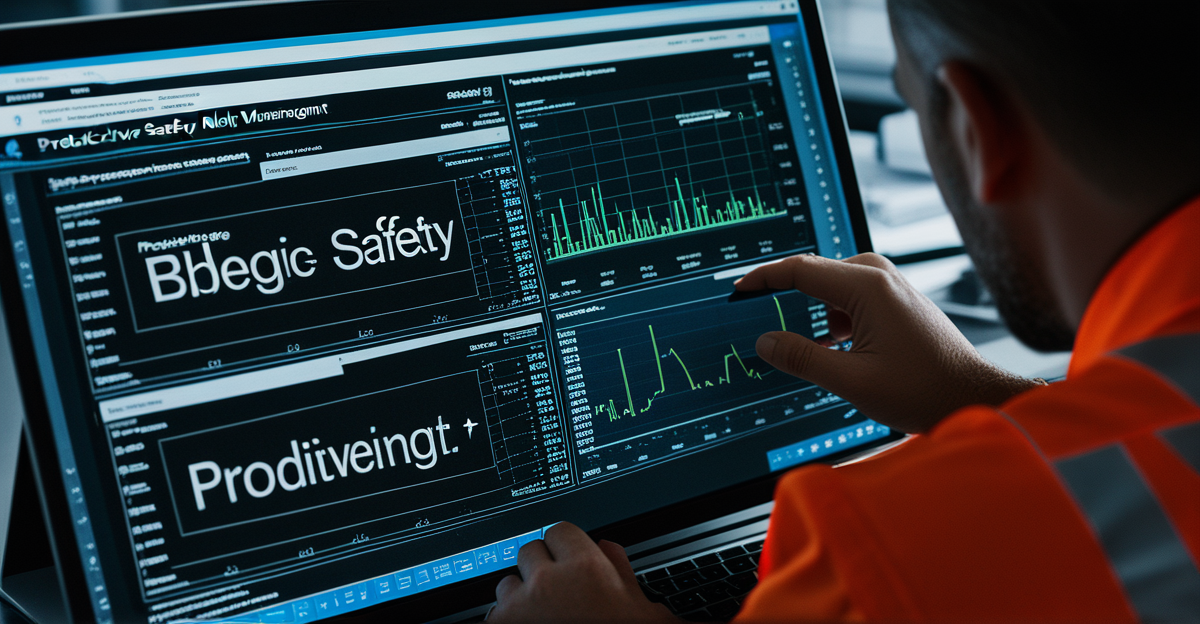Predictive safety analytics shifts workplace risk management from reacting to preventing accidents. By analysing diverse real-time data and applying machine learning, it uncovers hidden hazards and forecasts incidents. This proactive approach reduces injuries, optimises resources, and boosts safety culture—especially in high-risk sectors like construction and manufacturing—transforming how organisations safeguard their workforce.
Core Principles and Benefits of Predictive Safety Analytics in Modern Workplaces
Predictive safety analytics marks a fundamental shift by anticipating risks and acting before incidents happen—best practices for safety tech implementation recommend using real-time data to identify emerging hazards so interventions can be enacted swiftly. At its core, predictive analytics safety solutions use machine learning and AI in safety management to analyze vast streams of operational, environmental, and behavioral data. This technology discerns patterns, such as signs of equipment fatigue or unsafe worker practices, that traditional methods might miss.
Also to read : How Are Economic Policies Impacting UK Startups?
Traditional workplace safety prediction often depended on reviewing past incidents; predictive modeling for accidents, by contrast, dynamically processes sensor data, operational logs, and employee feedback to produce proactive safety interventions. This leads to significant reductions in industrial accidents, improved operational efficiency, and robust accident prevention strategies.
Companies deploying risk assessment technology also experience cost savings through fewer safety-related shutdowns and lower insurance premiums. Further, by improving safety performance indicators and safety data analytics, organizations can foster a culture of continuous improvement and boost employee morale, which in turn enhances overall productivity and provides a competitive edge in risk management.
In parallel : What are the key factors driving growth in the UK retail sector?
Methodologies: Data Collection, Analysis, and Real-Time Hazard Prediction
Gathering and integrating diverse workplace safety data
Precision: tp/(tp+fp). Recall: tp/(tp+fn). Token matching identifies the overlap between observed and predicted hazards. Companies collect data from incident reports, sensor readings, equipment logs, and worker feedback. By integrating with IoT networks, organizations ensure continuous access to environmental metrics, machinery status, and workforce conditions. Seamless data integration is essential to provide a comprehensive view, allowing nuanced risk assessment that uncovers early warning signs—such as trends in equipment degradation, abnormal shifts in environmental readings, or employee fatigue patterns—that traditional audits might miss.
Application of machine learning and AI to analyze hazard patterns and build predictive models
Machine learning leverages these diverse datasets to pinpoint correlations between variables and past safety incidents. By applying advanced predictive modeling for accidents, organizations detect subtle, leading indicators of risk with greater accuracy. AI-driven hazard identification tools scan real-time data, refining their algorithms through continuous learning. This analytical layer quantifies risk factors and enables the development of dynamic risk forecasting models tailored to each unique operational environment.
Implementation of real-time monitoring systems and generation of actionable alerts for risk prevention
Real-time safety alerts are generated by comprehensive monitoring systems, triggering timely interventions when deviations are detected. Smart wearables, environmental sensors, and machine interfaces quickly relay actionable notifications to relevant teams. Immediate response capabilities reduce the chance of escalation, providing effective, proactive protection rather than reactive remediation.
Industry Applications, Tools, and Case Studies
Predictive safety analytics is now pivotal across manufacturing, construction, and transportation, setting a new standard in dynamic, data-driven safety solutions. These industries use injury prediction models built from diverse data—ranging from machinery sensors to employee observations—to guide real-time decisions and prevent accidents.
Manufacturers leverage predictive analytics software safety tools to anticipate equipment failures or worker fatigue, reducing costly downtime. Construction sites employ sensor data and IoT solutions for safety analytics, pinpointing risks such as hazardous material exposure or unsafe weather conditions before they escalate. The transportation sector benefits from driver behavior monitoring and telematics, using analytics to adjust schedules and mitigate fatigue-based incidents.
Advanced tools include wearables for safety compliance monitoring, VR/AR for immersive hazard response training, and drones for inspecting hard-to-reach or high-risk areas. Robotic solutions automate hazardous tasks, further reducing human exposure.
Case studies highlight measurable results—accident rates drop and operational efficiency steadily improves. For example, AI-driven shift management systems have lessened fatigue-related injuries, while safety analytics platforms track near misses, offering targeted interventions. This transition from traditional, reactive practices to continuous, predictive oversight empowers industries to build safer, smarter operations.
Implementation, Best Practices, and Future Trends
Key Steps for Integrating Predictive Analytics
Successful predictive safety analytics implementation begins with a detailed assessment of existing safety protocols using documentation audits, field observations, and employee input. Data validation is crucial—organizations must ensure accuracy and completeness when collecting information from incident logs, sensor readings, and operational records. Seamless integration with current systems requires evaluating interoperability and aligning the analytics strategy with safety objectives.
Building effective predictive models means drawing from diverse workplace safety metrics, such as near-miss incidents, equipment performance, and worker behavior. Continuous safety improvement through analytics relies on regular updates, real-time data monitoring, and dynamic feedback loops to fine-tune risk predictions.
Building a Data-Driven Safety Culture
Transforming safety culture involves comprehensive training and ongoing change management. Teams receive tailored education: leaders focus on interpreting trends and guiding policies, while workers learn practical data-driven safety behaviors. Establishing feedback channels fosters collaborative safety practices, empowering all levels of staff to participate in continuous improvement.
Emerging Trends and Strategies for Progress
Integrating artificial intelligence, IoT, and real-time analytics transforms risk management. Wearable devices and automated safety reporting allow organizations to act instantly on emerging hazards. Looking ahead, model refinement and deeper data integration will further increase predictive safety analytics accuracy and accelerate proactive intervention, making workplace safety smarter and more adaptive.






